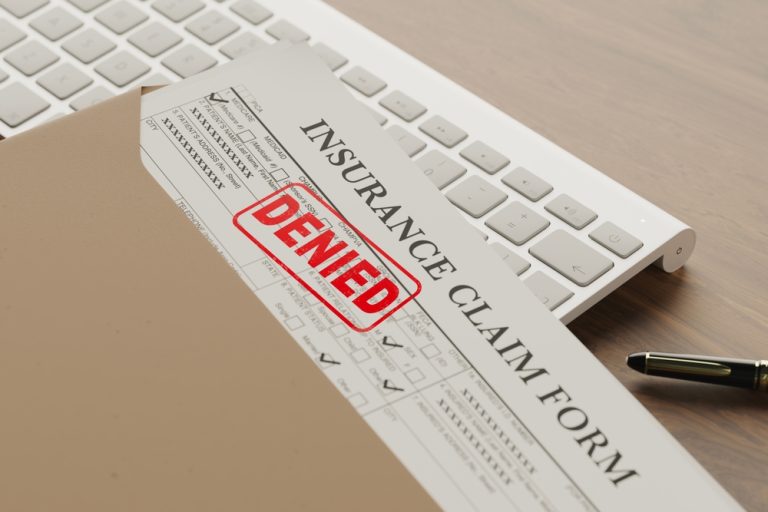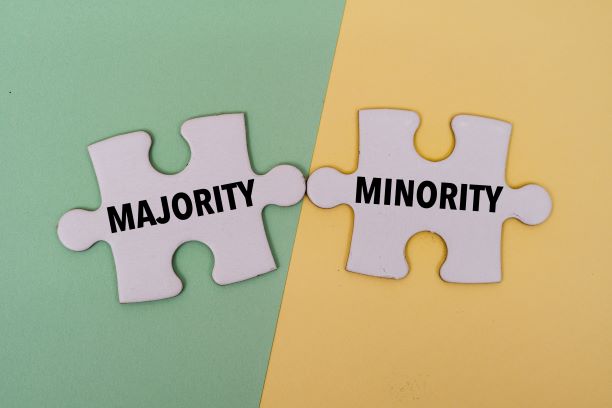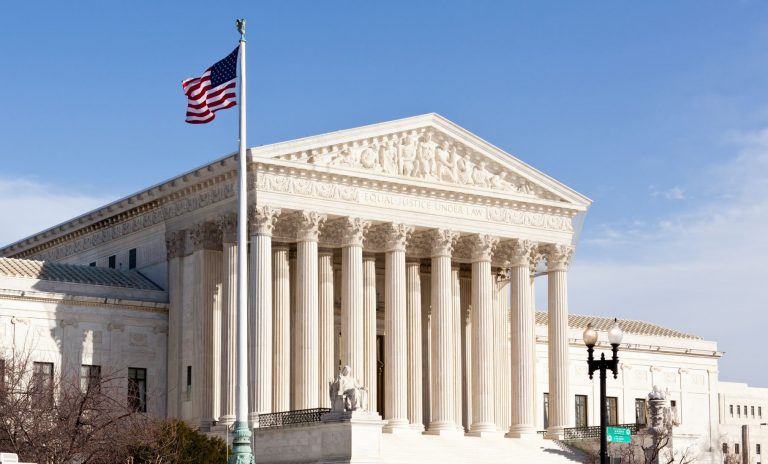Recovery Actions – Maximizing Recovery of Restitution in the Wake of Insurance Fraud
Recovery Actions – Maximizing Recovery of Restitution in the Wake of Insurance Fraud
WHAT’S THE POINT?
Insurance fraud negatively impacts everyone. It drives up the costs of doing business, along with everyone’s premiums. In fact, according to the National Insurance Crime Bureau, insurance companies saw a 102% increase in this type of fraud from 2008 to 2011.
Florida ranks among the ten most expensive states for car insurance. Insurance fraud of all types is rampant, particularly in certain areas. With prosecutorial resources stretched thin, insurance companies sometimes must choose to become their own “attorneys general” and take private action against fraud rings.
The prosecution of civil lawsuits against fraud rings can be rife with issues, however. These include the cost of hiring counsel, the time involved with civil litigation and the uncertainty of results. Other issues concern collectability; a seven-figure judgment is not worth very much if the debtor is in jail for the next 20 years, has fled the country or is otherwise uncollectible.
This may lead some to conclude that the filing of recovery actions are simply not worth the time and expense. In many cases, however, recovery actions may be appropriate not only because they allow companies to recover stolen monies but for their deterrent effect. Insurers owe it to themselves to carefully analyze suspected fraud, and whether the filing of a recovery action will terminate the fraud and enable them to recoup lost funds.
This article discusses the considerations insurers must have in mind when considering recovery actions, beginning with pre-suit considerations, the litigation itself and, just as importantly, how to ensure that a judgment or restitution award is ultimately collectible.
PRE-SUIT CONSIDERATIONS
Who To Sue?
The first order of business is getting a handle on the potential group of defendants. Does the fraud revolve around a single clinic, or a multi-faceted staged accident ring comprised of body shops, towing companies, health care clinics and dozens of participants? The pervasiveness of the scheme, and how far the fraud web extends, will likely influence the most appropriate type of recovery action. So will the ultimate goals of the litigation. Often times, including as many participants as possible will increase the overall recovery and enhance the deterrent effect. In other cases, a narrowly-targeted lawsuit involving just one business or a few individuals will be more appropriate.
Depending on the forum, manageability concerns will play an important role in the prosecution of the case. Some courts simply lack the resources to devote to a lawsuit involving dozens of people and businesses. Others have special systems in place to handle “complex litigation.” The availability of these courts in your jurisdiction will impact your case.
Collectability
This is a critical factor in every case. You may win, but “paper” judgments are not worth much if the debtors are uncollectible. The solvency of the potential defendants can and should be analyzed to the extent possible before filing the lawsuit.
Researching your targets will allow you to make informed decisions about whether or not to target a particular defendant. Take advantage of publicly available information, including ongoing civil or criminal litigation against your potential targets. Sometimes, a bit of quick research will reveal that they own valuable property or other attachable assets. Consider using a private investigator or company specializing in pre-judgment asset evaluations to assist you’re your analysis.
One caveat, however, just because a defendant isn’t obviously wealthy does not mean there are no assets. You might well find that defendants of seemingly modest means have considerable (and attachable) resources.
Criminal Proceedings
As noted above, sometimes your targets are already the focus of criminal investigations or formal prosecutions by state and federal courts. Insurers are often aware of this activity because they work hand-in-hand with various law enforcement agencies.
Monitoring criminal proceedings is important because the information gathered as part of investigations can be used in civil litigation. Even if a criminal proceeding has not begun, they remain important because the specter of a criminal prosecution will often force civil defendants to invoke their 5th Amendment rights. In this instance, that invocation can be held against them which results in an obvious advantage in any civil prosecution.[1]
Accordingly, regardless of whether proceedings are ongoing or simply contemplated, be cognizant of the status and determine what advantages you might gain from filing immediately or waiting for the results of a criminal prosecution.
Marshal Your Evidence
As plaintiffs, insurers have the advantage of not only investigating the defendants’ backgrounds, but assembling their proofs as well. This will be particularly important since the nature of the claims involve intentional, fraudulent misconduct. As such, heightened rules of pleading apply, requiring greater specificity for these fraud-based claims. In other words, your complaint will have to include the basic elements of any newspaper story, who, what, when, where, why? It will also be necessary to explain how the fraud occurred as well.
Experts – Outside And In-House
Expert witnesses can often assist the insurer in explaining how the fraud occurred. For example, if the case involves allegations of upcoding, unbundling or lack of documentation to support a course of treatment, have an expert analyze the evidence and substantiate the allegations before filing suit. And ask that expert to prepare a report. In some instances, you may wish to append the report to the complaint or otherwise verify the allegations. This will help considerably and often provide the information required by a RICO case statement.
Also, consider having either an outside expert or in-house SIU investigator verify other factual allegations of your suit. If you are dealing with a staged accident ring, for example, work with your investigator to lay out the allegations. Unlike some instances where litigants gain an advantage by keeping their evidence close to the vest, laying out your case satisfies the specificity requirement and demonstrates to the defendants that you have them pinned down.
A Word About Presenting Evidence
The phrase “a picture is worth a thousand words” definitely applies to recovery actions. Fraud, unfortunately, is rarely simple or straightforward. Rather, insurance fraud schemes are often involve multiple participants and intricate, complex webs of deceit taking place over years. One key to a successful recovery action is simplifying the presentation of evidence and making exposing the scheme in a way that anyone can understand.
Documentary evidence, particularly photographs, can assist in this regard. When putting together your case, consider what evidence you have that supports each of your claims. Then consider whether photographic evidence exists which can help tell the story and unmask the fraud.
For example, in a staged accident case, are the participants using vehicles that have already been damaged? Take time to research whether your vehicle has been the subject of additional loss claims, either from your company or others. If so, make sure to collect the photographic evidence. Even the most cunning participants cannot credibly explain their way around these images.
Photographs showing identical damages through multiple accidents have a powerful effect. This is particularly true when the damage in a previous accident is so bad the car cannot be driven. Check the mileage from one accident to the next. You might find that the vehicle has not been driven. The creative use of this visual evidence can be very convincing, difficult for defendants to explain and often impossible to overcome.
Additionally, look for patters that emerge with towing companies; are the same businesses towing accident vehicles to the same body shops? Are accident “victims” from your case treating at a select handful of clinics? If you are dealing with an organized ring, you will likely find that patterns emerge when you analyze the evidence.[2] Use these patters to shape the allegations in your lawsuit and minimize the efforts you will have to take when engaging in discovery.
THE LAWSUIT
What Type Of Claims To Bring And What Forum To Bring Them In?
You may have a choice of state or federal court depending on the nature of the claims and whether “complete diversity” exists. In other words, if the plaintiff(s) and defendant(s) are from different states, you may be able to commence your action in federal court. The reasons for doing this are many; federal courts are often better equipped to manage large cases or cases involving complex and/or technical issues. This can often be the case when a recovery action involves multiple layers of defendants and organizational levels. In federal court, magistrates are also available to help manage discovery issues and issue rulings on other pre-trial matters.
But federal court has its potential downsides as well. You may have a large, complex action, but find yourself on a tight trial docket. This is good in the sense that it ensures a quick prosecution, but you may not receive as much time as you want, or think you might need. Federal courts also set limits on the number of depositions and other available discovery tools. Presumably, the court will enlarge these limits based on the nature of the case. But if the court exercises its discretion and declines to do this, you could find yourself on a tight trial docket without being able to take necessary discovery.
Another aspect of Federal court is that the rules of procedure require more detailed expert reports. This should not be a problem if you’ve had an expert analyze the billings and prepare pre-suit reports. Aside from a coding expert, analyze whether other experts such as accident reconstructionists or engineers might be necessary. Additionally, if you’re dealing with vehicles involved in repeat accidents, identify either an in-house investigator or third party expert who can opine that the damage from the first accident matches latter accidents.
State court systems vary in their ability to handle multi-party racketeering-type litigation. Some larger court systems have “complex business” divisions or large-scale dockets which allow courts to focus more attention on the case. You may need to file a motion to have the case moved there. Some jurisdictions have special masters available to hear discovery disputes and other pre-trial matters. If you have your case properly prepared from the start, however, the need for court intervention should hopefully be minimal.
What Claims?
Regardless of forum, the claims will likely be similar. Insurance fraud lends itself well to claims under state and federal racketeering acts, civil theft, common law fraud and claims for unfair and deceptive trade practices. Some or all of these claims will require a heightened standard of proof. Thus, while a plaintiff in a garden-variety negligence claim will have a “preponderance of the evidence” standard, many RICO and fraud-based claims may require proof by “clear and convincing” evidence. This does not rise to the level of “beyond a reasonable doubt” in a criminal case, but nevertheless, insurers must be ready to satisfy a heightened standard when presenting a case to the jury.
Another point to have in mind is that many statute-based claims such as RICO, civil theft and unfair and deceptive trade practices acts have prevailing-party attorney fee provisions. This can help enhance the ultimate recovery. But because they are reciprocal, they can also put insurers at risk for fees in the event of a loss. This highlights the importance of the pre-suit investigation. Tying down the facts greatly minimizes any chance of an adverse result later on.
Are Pre-Suit Injunctions/Asset Freezes Available?
One of the greatest concerns in a recovery action is that the defendants, upon learning of the lawsuit, will dispose of their assets. The courts do offer options for recovery action plaintiffs to attempt to prevent this, including pre-suit injunctions and/or asset freezes. While sometimes difficult to obtain, litigants should at least consider bringing motions for injunctive relief along with their claims.
YOU’VE GOT THE JUDGMENT – SO NOW WHAT??
Collecting the Judgment – Rule #1 – Don’t Stop!
The process of collecting money as part of a successful recovery action is better analogized to a marathon than a sprint. Obtaining the judgment or restitution order is just one step in the process. Unless insurers know that the debtors are judgment proof, there is no need to wait to commence the collections process. But delays do happen, allowing debtors to hide assets or participate in other transfers designed to avoid paying on the judgment.
After obtaining your judgment, immediately take the steps to record and otherwise perfect it. If the defendant has relocated since the judgment, have it domesticated and then take steps to enforce. As a creditor, you are now entitled to a wealth of personal information you could not discover before the judgment.
The information-gathering process begins immediately after the Court enters the judgment. More specifically, Florida debtors must complete a fact information sheet, Form 1.977, within 45 days of the final judgment. This insures that creditors receive basic and current information regarding the debtor’s financial condition. This includes contact and employment information, income, accounts receivable, assets held and property transfers. While assembling information, make sure to monitor other ongoing litigation, such as foreclosure proceedings, which could impact a debtor’s ability to pay.
Once armed with information, creditors can follow up with more specific financial discovery. This can include interrogatories, requests for production of additional information and ultimately, depositions in aid of execution. Additionally, consider outside efforts to locate any information regarding the debtor’s relationship with any banking institutions. There are companies which can, for a fee, assist in locating potentially attachable accounts. This will enable the creditor to commence garnishment proceedings in instances where accounts hold funds.
Don’t Let Bankruptcy (Or The Threat Of It) Deter Collection Efforts
Often, debtors and their attorneys will resist payment of any sums, and threaten to avoid the judgment by filing for bankruptcy. However, bankruptcy is not necessarily the end of the line. In fact, far from it. This is because the bankruptcy code prevents debtors from discharging judgments stemming from certain types of claims involving fraud. More likely than not, one of the claims in the recovery action will fall into this category. To ensure that the debtor cannot discharge the claim, the insurer must take the appropriate steps in bankruptcy court. This can result in a mini-trial on the issue of fraud. The bankruptcy process can be confusing and time consuming. But at the end of the day, you should emerge from it with your judgment intact.
CONCLUSION
Recovery actions serve multiple purposes. They deter. And they help make insurers whole. Analyzing potential cases, gathering evidence and prosecuting selected matters helps insurers gain back at least some of what fraud rings take away. By doing your homework before the action, and aggressively pursuing collection after the judgment, you can enhance your odds of a successful prosecution.
[1] See Baxter v. Palmigiano, 425 U.S. 308, 318, 96 S.Ct. 1551, 47 L.Ed.2d 810 (1976) (“[T]he Fifth Amendment does not forbid adverse inferences against parties to civil actions when they refuse to testify in response to probative evidence offered against them[.]”).
[2] You also need to address admissibility concerns, particularly with respect to documents like police reports, photographs and damage estimates. This subject, however, is beyond the scope of this article.






